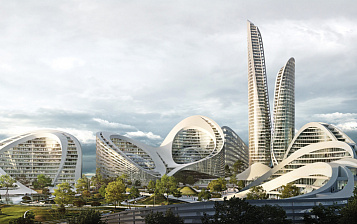Rome is a cultural center, a historical city with a rich history. A city of attractions, in the piggy bank of which there are a lot of historical and cultural masterpieces immortalized over the centuries. And he is in the glorious country of Italy. As everyone knows, Italy has a very large number of attractions: cathedrals, museums, monuments, pretty paintings, etc. Ancient cathedrals, gloomy castles and majestic palaces are also part of the beautiful features of Italy.
Rome is one of the oldest cities in the whole world.
The tourist traffic in this city is just crazy. From all over the world, people come to this place to marvel at the amazing city, standing on seven hills, which have the names: Palatine, Quirinal, Caelius, Capitol, Esquiline, Aventine and Viminal. Only in Rome is there a State within a State.
The Vatican is the center of the Catholic religion and is a separate state, although it is located on the territory of Rome. How many interesting and mysterious things can be seen here with your own eyes. After all, each statue, sculpture, painting has its own history and is connected with each other by a very amazing riddle. It was here that the sculptures were created not only for beauty. This is a sign of some intricate puzzle, the solution of which can lead to the disclosure of a very amazing secret. The squares and cathedrals, fountains and bridges of Rome, as well as the ruins carefully preserved by contemporaries, delight visitors and make them complete in their imagination the beautiful image of the eternal city, as it was many centuries ago.
TREVI FOUNTAIN
The Trevi Fountain is an amazing monument of Baroque art, which occupies one of the first places in the top popular attractions in Rome.
The grandiose composition harmonizes with the architecture of the magnificent Poli Palace. The scale of the idea and its masterful implementation, an amazing combination of living water and frozen stone create a unique aura in this place. The fountain reaches a height of 26 meters and a width of 50 meters. The transformation of a natural spring into an artistic and architectural composition took place in the 18th century. It seems incredible, but the water in the Trevi Fountain is still supplied through the pipes of the aqueduct built more than two thousand years ago, and the annual volume of water flow is about 80,000 m 3 .
The legend says that the water in the fountain is not only healing, but also has magical properties: it can give people happiness in love and marriage. To do this, you must perform the following ritual: turn your back to the fountain and throw three coins in turn with your right hand over your left shoulder. The first of them is a guarantee that you will definitely return to the Eternal City, the second will bring you together with the love of your life in the near future, and the third will make your marriage strong and durable. The fountain is available to tourists around the clock throughout the year for free .
In the evening and at night, the original lighting gives a special flavor to this amazing place. The Trevi Fountain often appears on postcards, photos and even in films. A passionate scene from the film La Dolce Vita by F. Felinni was filmed here, as well as the meeting of the heroes of The Taming of the Shrew.
SPANISH STAIRS AND SQUARE
The Spanish Steps are the grandiose Baroque stairs in Rome. A favorite vacation spot for young people.
The staircase consists of 138 steps that lead from the Plaza de España to the church of Trinita dei Monti, founded in 1482 by the French kings.
At the foot of the stairs is Piazza di Spagna with the Barcaccia marble fountain by Pietro Bernini, father of the great Gian Lorenzo Bernini, which is a half-flooded longboat - a reminder of the great flood of the 16th century. Since the 17th century, the Spanish embassy has been located here. The area is famous for the most expensive shops. Among the world-famous jewelry stores and luxury boutiques is the famous Antico Caffe Greco, where Goethe, Schopenhauer, Stendhal and Wagner drank coffee.
PANTHEON
The Pantheon, or the Temple of All Gods, is the pinnacle of ancient Roman architecture.
The Pantheon in Rome serves as a reminder of the power and strength of the once reigning empire. This temple was considered one of the monumental in the city: until the 7th century, pagans offered prayers here, after - Christians. Now the Pantheon is included in the list of the main attractions of Rome. This is the only sanctuary in the world that has survived to this day almost in its original form.
The temple welcomes tourists with a huge cylindrical room.
On both sides, the Roman Pantheon branches into two naves (with the exception of the central part of the room). There are no windows. The space is visually divided into three tiers (floors), gradually narrowing towards the top. The surface of the dome is decorated with caissons - recessed panels - forming 5 rows of 28 pieces. Perhaps these decorative elements had a certain meaning: lunar, geometric or numerical. Absolute geometry: the diameter of the Pantheon is equivalent to the distance from the floor to the dome (43.3 m). An ideal sphere equidistant from its center. From the point of view of the hidden meaning, the sphere is an expression of the universe, the all-encompassing cyclicality to which the universe is subject. Outstanding minds, rulers and even saints of Italy found their last refuge within the walls of the sanctuary. The former include artists: violinist Arcangelo Corelli, sculptor Flaminio Vacca, architect Baldassare Peruzzi, as well as painters Giovanni da Udine, Taddeo Zuccaro, Annibale Carracci, Perino del Vaga. A special place is given to the sarcophagus of Raphael Santi, canonized, and his wife Maria Bibbiena.
The dome of the Roman Pantheon is a unique creation of ancient Roman architecture. And today it amazes with the accuracy of engineering calculation and the skillfulness of its implementation. Incredibly, for 13 centuries the Pantheon remained crowned with the largest "floating" dome! It was surpassed only by the Cathedral of Florence Santa Maria del Fiore by architect Filippo Brunelleschi. But the dome of the grandiose St. Peter's Cathedral in the Vatican, designed by the great Michelangelo, did not surpass.
COLISEUM
When you first think of Rome, only one thing comes to mind - the Colosseum.
The Colosseum is a majestic ancient Roman monument that has become a world landmark. This building, erected 5 centuries ago, was a place of gladiator fights, executions, and torture of slaves. Perhaps its walls still retain the spirit of sensations experienced by witnesses of these events. According to historians, about 100 thousand workers took part in the construction of the amphitheater, most of which were prisoners of war and slaves. After eight years of exhausting and non-stop work, the Colosseum was completely completed.
In modern times, the Colosseum is a huge ancient building, which is located in the very center of Rome. The structure itself is very much destroyed and is subject to constant restoration to maintain the general condition. According to approximate estimates of scientists, the modern Colosseum is only one third of the original building, but even this fact does not detract from the greatness of the building. At the beginning of our era, when all the inhabitants of Rome flocked to the Colosseum to watch the next gladiator fight or theatrical performance, 50,000 spectators could easily accommodate seating around the arena, and up to 18,000 could watch performances standing. Today, the capacity of the Colosseum is much smaller, but this does not prevent thousands of guests from coming to the iconic place.
In 2007, the New Open World Corporation held a competition in which people from all over the world were able to take part in the voting and choose those structures that, in their opinion, are worthy of the title of the New Seven Wonders of the World. The first place was taken by the Colosseum, which became the only attraction on the list representing the heritage of European culture.
ROMAN FORUM
The Roman Forum is a square in the center of Ancient Rome, which has long been the center of public life. This is the place where important political events and events in the public life of the townspeople were held. Dozens of structures for various purposes are assembled on an area of 500 m 2 . The Roman Forum, shimmering with marble and shining with gilding, became the center of the Roman world. But in the VI century. began a gradual decline. In the Renaissance, they began to plunder the most valuable materials in order to decorate new palaces and churches with them. Up to the XVIII century. Roman shepherds grazed their cattle here - and the Forum was called a pasture for cows. At about the same time, systematic excavations begin, ancient ruins are taken from a 10-15-meter depth into the light of God.
CASTLE OF THE HOLY ANGEL
Castel Sant'Angelo is an architectural monument and museum in Rome. Initially, it was a tomb, then a castle, after the residence of popes and a repository of their valuables, and also a prison at the same time. Today, this majestic historical monument invites guests to visit the National Museum, filled with historical exhibits and treasures, as well as the Armory, the Museum of Military History, and the ancient library. Castel Sant'Angelo is structurally a huge cylindrical fortress with a square base lined with marble. The towering round towers of the castle were named after the four apostles: Saint John, Saint Luke, Saint Matthew and Saint Mark.
Interesting fact:
The name of the Castel Sant'Angelo comes from the following legend. If you believe the legends, in 590, Pope Gregory the Great, in the midst of a plague epidemic, the Archangel Michael appeared, sheathing his sword, and thus symbolizing the end of a terrible disease. So the castle got the name of the Holy Angel.
BASILICA OF SANTA MARIA MAGIORE
Santa Maria Maggiore is one of the main churches in Rome, the papal basilica, located at the very top of the Esquilina. Its bell tower (75 m) is the highest in Rome. According to legend, it was built after a prophetic dream of Bishop Liberius, who dreamed of the Blessed Virgin, indicating the place where the church would be built where the snow would fall. In honor of the miraculous snowfall, which, according to legend, took place in August, the pilgrimage Basilica of Santa Maria Maggiore was built on the Esquiline Hill. Since then, every year on August 5, festivities take place, during which thousands of snow-white rose petals fall from under the dome of the church, depicting a prophetic snowfall.
It will be interesting to see:
- Golden casket with the Holy Cradle of Jesus;
- Holy relics of Pope Pius V;
- Maria Salus Populi Romani icon;
- Masonic symbol, etc.
VILLA AND PARK BORGHESE
Villa Borghese is an English-style landscaped park that occupies Pincio Hill. It was broken in the 17th century. by order of Scipio Borghese. There are many park buildings, fountains and monuments on a large territory among chestnut trees, sessile oaks and pine trees.
The history of the villa dates back to the 16th century, when Marcantonio I Borghese (1504–1574) acquired a large piece of land on the Pincio hill used for growing grapes.
The most prominent role in strengthening the family was played by Camillo (son of Marcantonio I), who was elected Pope Paul V in 1605. During the years of his pontificate, the Borghese family acquired many privileges. The ducal title was bestowed on the elder brother of the Pope, and the younger one became the manager of the Castel Sant'Angelo. In addition, the son of the Pope's sister, Scipio Borghese (1577–1633), received from the hands of his uncle the cardinal's cap and the post of papal secretary. It was Scipio Borghese who in 1606, wanting to create a unique "garden of delights", began building a beautiful villa on a piece of land bought by Marcantonio I. The construction project, approved by Scipio, provided for the construction of a huge park complex and a luxurious residential mansion.
It will be interesting to see:
- Borghese Gallery with art collections of the Borghese princely family;
- the National Museum of Villa Giulia with the largest collection of Etruscan art;
- the National Gallery of Modern Art, which gives an idea of all the major art movements of the 19th-20th centuries;
- The Globe Theater named after Silvano Toti, specializing in the plays of W. Shakespeare;
- House Museum of Pietro Canonica, sculptor, painter, composer;
- Carlo Bilotti Museum with works mainly by D. de Chirico, as well as temporary exhibitions of contemporary art.
VATICAN
The Vatican is a city-state, lies on the right bank of the Tiber and includes a sovereign state papal region within Rome, formed instead of the papal state abolished in 1870 during the unification of Italy.
The Vatican City includes St. Peter's Square, St. Peter's Basilica, the Vatican Gardens, mostly walled. The smallest state in the world (area - 0.44 km2, population - about 1000 inhabitants) also includes the patriarchal basilicas of Santa Maria Maggiore, San Paolo Fuori le Mura and San Giovanni in Laterano, administrative buildings and papal summer residence at Castel Gandolfo.
SAINT PAUL'S CATHEDRAL
St. Peter's Basilica is the center of the Roman Catholic religion and is the second largest Christian church in the world. This is one of the most revered shrines and the most popular object of worship for pilgrims from all over Europe. Located in St. Peter's Square in the Vatican. In addition, he is a treasury of the art of painting and artistic painting. Such masters as Michelangelo, Bernini, Raphael and other famous masters worked here. The cathedral is dedicated to the Apostle Peter, the first bishop of Rome, whose successors are considered to be all popes.
Inside, St. Peter's Cathedral is striking in its scale: the length is 186 m, the height in the central nave is 45 m, and with the dome - all 119 m. In addition to the main dome and eight side domes, the interior of St. Peter's Cathedral is decorated with 800 columns and 390 colossal tufa statues , marble, plaster and bronze. There are 45 separate altars here. Visitors enter the basilica through massive bronze doors. Nearby are the "Holy Doors" which are opened only for the Pope to proclaim a feast or a holy year. The double dome of the cathedral with a diameter of 42.2 m above the papal altar rests on powerful pillars, and between them in niches there are statues of St. Helena, St. Veronica, St. Longinus and St. Andrew. There is a Latin inscription on the ring of the dome: "You are Peter, and on this stone I will build My Church... And I will give you the keys of the Kingdom of Heaven." Above the gallery inside the vestibule between the two layers of the dome, stairs lead to the lantern, which offers a grandiose view of St. Peter's Square, the Vatican and Rome. You can partially climb the dome by an elevator and then overcome 321 steps, or you can walk 521 steps on your own.
A little about St. Peter's Square in Rome
A place that is also very popular is St. Peter's Square in Rome. Piazza San Petro (the original name of the square) is a huge square that stretches for hundreds of meters in front of the majestic St. Peter's Basilica in Rome. The square is a unique building of the noble architect and sculptor Giovanni Bernini, built in the middle of the 17th century. Many tourists come to the square and many who want to listen to the speeches of the Pope. As well as connoisseurs of culture and historians who approach architectural monuments with interest. You can personally greet the Pope and hear him speak on Wednesdays at eleven o'clock in the morning. At this time, he begins to read his sermon in the square, addressing residents around the world.
Often his sermons are broadcast on television. Let's return to the design of the square. Along the perimeter, the square is furnished with semicircular clones of an old Italian order. At the request of the emperor of that time, an Egyptian obelisk stands in the very center of the square. The thing is that the emperor believed in the ancient Roman gods and in the existence of unusual deities and creatures, so he ordered an obelisk to be placed in the very center of the square, where he sat. The obelisk has an ancient name, which is covered with bad fame - Caligula. In addition to religion, the obelisk plays the role of one of the ancient astronomical instruments.
THE SISTINE CHAPEL
The Sistine Chapel, a former house church in the Vatican, was built between 1473 and 1481 by order of Pope Sixtus IV.
From the end of the XV century. conclaves for the election of the pope are held here. The fireplace, in which the notes with the votes cast are burned, is exhibited only during the election of the Pope. The modern Sistine Chapel is a large concert choir that performs not only the works of composers of the Roman school, but also any choral music in general, including composers of the 20th and 21st centuries. The only thing that connects it with the historical prototype is the gender restriction (only men and boys) and the lack of instrumental accompaniment of singing.
The fame of the chapel earned itself outstanding frescoes by Michelangelo, who painted the vault and the altar wall. Frescoes on the walls about 40 m long appeared simultaneously with the chapel - under Sixtus IV. Artists such as Botticelli, Ghirlandaio, Perugino, Pinturicchio, Rosselli and Signorelli created a cycle of frescoes dedicated to Moses and Christ, which depicted scenes from the Old and New Testaments. By order of Pope Julius II, in 1508, Michelangelo began a new painting of the vault, which lasted until 1512. Inscribed in magnificent decorative architectural paintings, surrounded by plastic and convex painted figures of the Sibyls and the prophets, Michelangelo's frescoes shining with colors tell the story of the Creation of the world and the Fall. The Last Judgment fresco created by Michelangelo is the most impressive and dramatic depiction of this theme in the history of art. In the center of the multi-figure composition (about four hundred figures), the Supreme Judge, Jesus Christ, sits on a throne, next to him are Mary and the saints. Against the background of the azure sky on the left, the saved rise to heaven, and on the right, the devils drag sinners to hell. But in the foreground is not the bodily torment of the damned, but their horror and inner suffering. However, later Pope Paul IV saw this amazing picture in a different way and considered the nakedness of the figures "existing Babylon." He ordered to cover it by writing over the naked figures of clothing. Only during the recently completed restoration were some of the additions removed.
CUISINE OF ITALY
For many, Italy is associated with pizza and spaghetti.
But Italian cuisine is very diverse and regional, because each region has its own traditional dishes. Italian cuisine is based on centuries-old historical traditions with cultural influences of the Romans, Greeks, Lombards, Arabs, and other peoples who have ever inhabited Italy or influenced the formation of its culture. This is, of course, the age-old history of cheese making and winemaking, savory meat products, a variety of olives, crispy panini with prosciutto, the freshest vegetables, fragrant pastries and desserts that melt in your mouth. Eating in Italian is a real ritual!


 DOWNLOAD
DOWNLOAD LOOK
LOOK Top Content of the Month
Top Content of the Month


